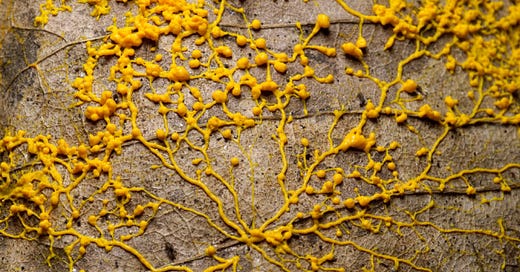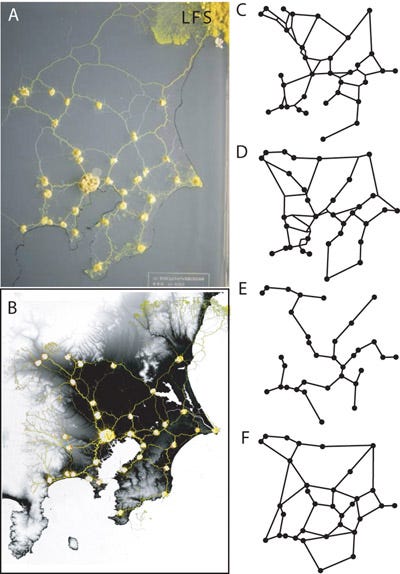From Tokyo to Toronto, slime molds are better than humans at designing urban transit
You read that correctly: Slime molds have time and time again proven to be more competent than humans at designing efficient public transit routes. Once considered merely a curiosity of the natural world, slime molds have evolved into a surprising tool for urban planning and transit design. Since 2010, when Atsushi Tero and his team successfully recreated the complex railway network of Tokyo using slime molds, these simple organisms have been reshaping our understanding of efficiency in transit systems.
Atsushi Tero and his posse have been investigating the path-finding ways of Physarum polycephalum, the “many-headed slime,” which survives by sending out tendrils in all directions in the quest for food. The unsuccessful tentacles wither and die, while the ones that locate a food source in the most efficient fashion grow fat and juicy. This setup produces a network of trails that just so happen to look a lot like your city's commuter-rail map.
Biomimicry in Action: From Tokyo to the World
Tero's initial experiment of simulating Tokyo's railway system with slime molds had some remarkable results. Initially, the slime mold dispersed evenly around the oat flakes, exploring its new territory. But within hours, the slime mold began to refine its pattern, strengthening the tunnels between oat flakes while the other links gradually disappeared. After about a day, the slime mold had constructed a network of interconnected nutrient-ferrying tubes. Its design looked almost identical to that of the rail system surrounding Tokyo, with a larger number of strong, resilient tunnels connecting centrally located oats.
In the years that followed, this concept was expanded and applied in various cities worldwide, leading to some fascinating developments:
The London Underground: A Biological Blueprint
In 2015, inspired by Tero's Tokyo experiment, a team of researchers in London set out to reimagine the city's iconic Underground system using slime molds. The mold was introduced onto a map of London marked with oat flakes at the locations of Tube stations. The resultant network not only mirrored the existing structure but also suggested potential new connections that could reduce transit times and congestion.
Toronto's Transit Transformation
Toronto, Canada's largest city, is sadly quite known for its inefficient public transit system. In 2017, a group of urban planners used slime molds to suggest modifications to the city's bus and subway routes. The result was a more streamlined network, with fewer redundancies and improved connectivity between suburban areas and the city center.
In fact, Toronto’s transit network was so inefficient that the slime mold would have died of starvation if the paths stayed unaltered…
The Impact on Public Transit
These real-world applications of slime mold behavior have profound implications for public transit planning. By mimicking nature’s efficiency, urban planners can design more fluid, resilient, and user-friendly transit systems.
While slime molds aren't about to replace urban planners just yet, their behavior offers a valuable perspective on solving complex design problems. As artificial intelligence continues to advance, it's not a stretch to imagine future AI systems that can learn from biological behaviors like those of slime molds to design efficient transit networks.
In the end, while we might not be ready to hand our cities over to slime molds, there's no denying the impact these fascinating organisms have had on our approach to urban planning and public transit. Love them or not, slime molds are steering us toward a more efficient and sustainable future for our transit systems.







